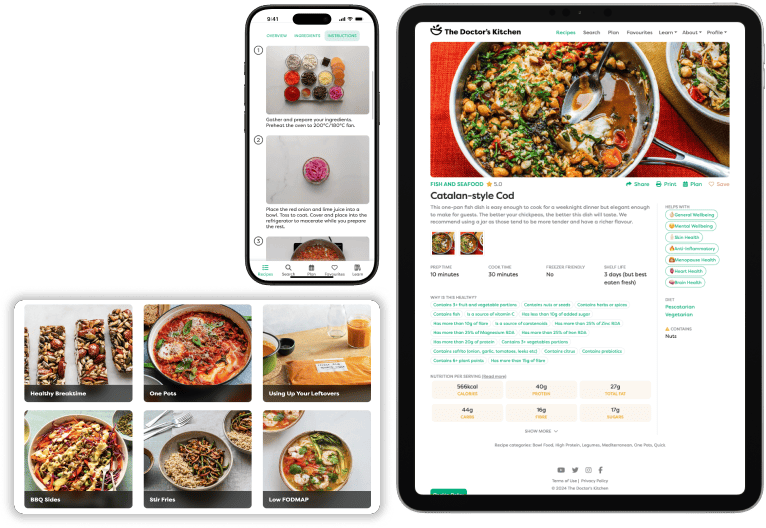Meal replacement shakes: Are they healthy?
11th Jul 2024
Meal replacement shakes or nutrition drinks claim to deliver the protein and essential nutrients of a full meal in one convenient drink, making them a popular choice for weight loss and busy lifestyles. But are they as healthy as they claim?
Key points
- Can they help with weight loss?
- 5 issues that make shakes not-so-healthy
- Our tips if you use them
- 5 on-the-go alternatives
Can they help with weight loss?
Research shows promise: Some studies suggest that diets incorporating 30 to 60% of daily calories from meal replacements such as liquid formulas, powdered mixes, or bars may be more effective for weight loss than traditional calorie-restricted diets. These might work by reducing complexity and improving adherence.
But there are significant gaps in knowledge. The studies did not assess how different types of meal replacements (such as powders, liquids, or solids) and their nutritional compositions impact outcomes. They primarily focused on weight loss and did not consider other crucial factors like cardiometabolic risk or broader health impacts.
5 issues that make shakes not-so-healthy
- Overly processed: They are typically made in large-scale manufacturing facilities where ingredients undergo extraction, refining, heating and chemical treatments to isolate specific nutrients or flavours.
- Additives and sweeteners: Many products contain vegetable oils, emulsifiers, thickeners, sugars and artificial flavours. Some studies link a higher intake of some additives like emulsifiers to gut inflammation and risk of heart disease
- Isolated and missing nutrients: A long list of synthetic vitamins and minerals might look good, but they lack the other beneficial compounds like phytochemicals and the complex interactions found in whole foods – known as the ‘food matrix effect’.
- Limited food diversity: You’re more likely to meet your nutritional needs by enjoying a wide variety of whole foods every day, which also helps shape a healthy gut microbiota.
- Less filling: Liquid meals don’t trigger the same fullness signals as chewing solid foods, which might leave you feeling hungry sooner and more likely to overeat later on.
Our tips if you use them
- Invest in quality whole foods first like seeds, nuts, dark berries, leafy greens, whole grains and spices. They provide a wide range of nutrients, fibres, and phytochemicals that meal replacement shakes can’t replicate.
- Use for specific needs: Reserve them for situations where preparing a balanced meal isn’t feasible or if you’re dealing with a loss of appetite, difficulty chewing, or trouble getting enough nutrition.
- Read labels carefully and look for:
- Mostly whole foods like seeds, beans, vegetables and fruits
- High fibre and protein
- No emulsifiers or added sugar
5 on-the-go alternatives
- Homemade shake with fresh or frozen fruits, leafy greens, yoghurt, chia seeds, flaxseeds, quality protein powder and nut butter.
- Kefir or yoghurt with fruits and nuts for protein, probiotics, and healthy fats.
- Baked falafels with quinoa, pumpkin seeds, chickpeas and spices.
- Chia pudding with kefir, chia seeds, grated apple, frozen berries, cinnamon, raw cacao, chopped nuts and coconut flakes.
- Egg muffins with your choice of vegetables (spinach, broccoli, peppers), feta cheese, fresh herbs and spices.
References/sources
Weight loss: Astbury et al. Obes Rev. 2019
Food additive emulsifiers: Sellem et al. BMJ. 2023
- Access over 800 research backed recipes
- Personalise food for your unique health needs

Related articles
-
Ingredients
Vinegar for blood sugar, cholesterol & weight loss?
-
Hot topics
Why calorie calculators are always wrong
-
Ingredients
Honey: Is it the same as eating sugar?
-
Hot topics
Green powders: Are they worth it?
-
Ingredients
Potatoes: Are they healthy?
-
Ingredients
Protein – Animal or Plant, Does It Matter Which?
-
Hot topics
The Future of Medicine is Functional